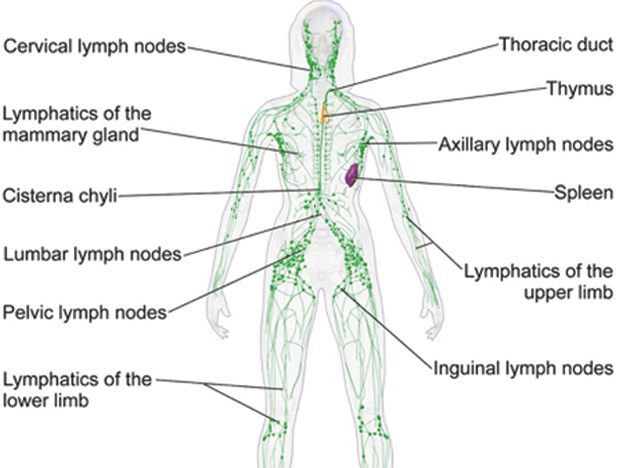By Shannon Willits
Ever hear the saying, “You are what you eat?” Turns out our bodies are more intricate than that simple statement.
In the health and wellness industry, we encourage eating a whole food diet, avoiding sugar and processed foods and drinking half of your bodyweight in water daily.
We can eat healthy, follow a nutrition plan and still hit a health plateau. There is more to your health than just “eating right.” Being stagnant in wellness is more common than we care to admit and can have nothing to do with our food. Our problem may be the other end of the equation. Instead of what you’re putting into your body, take a moment to focus on how your body is removing cellular waste.
Your lymphatic system is a fluid-based waste management system and its main function is to get rid of waste in order to make room for new nutrients. The lymphatic system deserves more attention and credit in the health and wellness world. We can eat organic whole foods, but if our bodies are not efficiently getting rid of cellular waste then we cannot optimally absorb the nutrients supplied. Simply articulated with this Osteopathic principle: “drainage proceeds supply.” Meaning in order for oxygenated blood and nutrition to be collected by tissue cells, the lymphatic system must get rid of cellular waste, toxins and excess fluid.

A well-explained analogy comes from Dr. Perry Nickelston, comparing our bodies to an aquarium and correlating our lymphatic system to a tank’s filtration system. You can have the healthiest fish, the best fish food and the cleanest coral inside your aquarium. However, without a good filtration system your tank will get toxic and impact the health of the entire ecosystem. We want our filters to be clear and promoting circulation of the water. You can replace fish, food and coral, but will still end up in the same problematic cycle if you’re not addressing filtration.
Within the lymphatic system are lymph nodes, which are like tiny toilets that flush waste. Without flushing, the cells are living in their own filth. This often manifests in symptoms like skin conditions that won’t go away, unexplainable brain fog, swelling and pain in one arm or one side of the neck, bloating in the belly or around the face, morning stiffness, chronic pain, inability to lose body fat and autoimmune issues.
What Causes “Poor Posture?”
“The lymphatic system cleans our cells, organs, and tissues. But if our posture is poor, it can interfere with the flow of lymph through the vessels and nodes just like a kink in a garden hose will interfere with the flow of water going through the hose. Ideal postural alignment contributes to an efficient lymphatic system.” Jack Ryan, Neuromuscular and Lymphatic Drainage Therapist (located in Sarasota).
Poor posture isn’t a sign of laziness. Nowadays weight issues are common, and weight gain changes how our skeleton and muscles support themselves. Poor posture is caused by many things including high heels, stress, accidents or injuries, foot problems and even low self-esteem, grief or sickness. When you slouch, so does your spine, leading to poor circulation and lymphatic flow. Fluid cannot flow where tissue is tight.
There are many reasons for tight tissue and blockages to exist in the lymphatic system. In Pilates, we concentrate on ideal postural alignment to improve flow through the main lymphatic drainage points.
Simple Pilates Movements for the Lymphatic System
Breathing properly promotes effective oxygenation of blood and lymphatic flow. It focuses the mind on the body and releases tension particularly in the neck, shoulders and mid-back. Exhaling deeply helps activate the body’s deep support muscles.
A three-dimensional diaphragmatic breath pattern is encouraged. Inhale expanding the ribcage in all directions simultaneously, like a balloon, without neglecting the sides or back portions of the torso. Exhale softening the neck, shoulders and ribcage.
Shrugs: Inhale as above shrugging the shoulders up for a count of five, keep the shoulders up for a count of five and then lower the shoulders. The shrugging up squeezes the lymph nodes and lowering the shoulders promotes movement of lymphatic fluid. Be as tension free as possible.
Ankle Pumps: Standing in a split stance with the left foot forward, the right foot slightly back on the ball of the foot and the spine angled slightly forward with hands on the wall. Inhale lift the back heel; exhale lower the back heel. Move slowly and be sure the back foot is pointing forward.
Rebounding: Breathing diaphragmatically, lift and lower the heels quickly while lightly bouncing up and down. It is not necessary to jump only to lightly bounce. Do 30 seconds, 3-5x.
Rolling Like a Ball: Sitting on the floor (carpet or mat) with knees pulled in toward the chest and arms around the shins. Inhale to roll back to the shoulder blades, exhale return to sitting.
These movements are safe for most people. Rolling like a ball is contraindicated for many spinal conditions like herniated and bulging discs and osteoporosis. As with any exercise program, consult your doctor first.
An efficient lymphatic system is beneficial for our entire body’s aquarium to be healthy and compliments any health goal. By focusing on your body’s filtration and waste management system our internal ecosystem can thrive easier. So, make the most out of your nutrition efforts and work on your lymphatic system.
Shannon Willits, Master Pilates Educator
Shannon is a trained movement specialist holding prestigious certifications in STOTT Pilates, a fellowship in Applied Functional Science (FAFS) and is a Functional Golf Specialist. Shannon is a master trainer for Club Pilates, Barre Above and Relief Through Rolling, which focuses on self-myofascial release. She is also certified in other movement modalities including TRX, the MELT Method, BOSU, Gyrotonic and more. Shannon shares her expertise and passion by mentoring aspiring and growing Pilates instructors through her teaching training academy.









